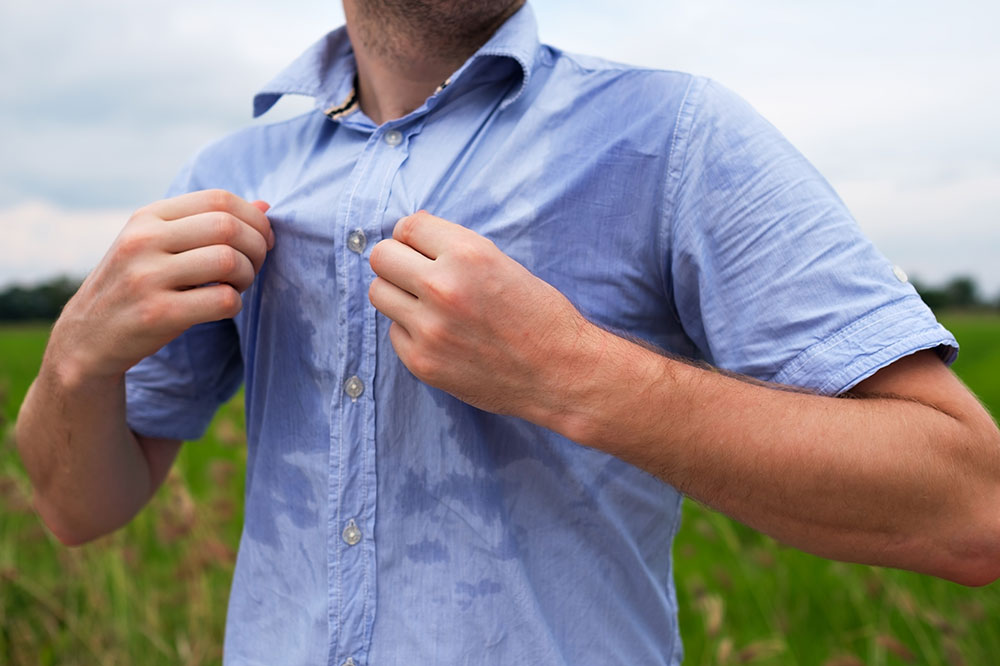Effective Dietary Approaches to Control Excessive Sweating
Excessive sweating, or hyperhidrosis, can be managed effectively through targeted dietary strategies. Recognizing foods that trigger increased perspiration, such as spicy dishes, caffeine, and alcohol, allows individuals to make smarter food choices. Incorporating hydrating fruits, vegetables, calcium-rich foods, and oatmeal can help regulate body temperature and reduce sweating. Proper hydration and consultation with healthcare professionals are essential for persistent cases. This comprehensive guide explores nutritional and lifestyle tips to control excessive perspiration naturally, improving comfort and confidence in daily routines.

Effective Dietary Approaches to Control Excessive Sweating
Excessive sweating, medically known as hyperhidrosis, is a condition characterized by abnormal and persistent perspiration that surpasses the body's actual needs for temperature regulation. While sweating is a vital process to cool the body during heat exposure, physical activity, or emotional stress, some individuals experience sweating excessively even without apparent triggers. This can lead to discomfort, embarrassment, and impact daily life. One of the ways to manage and reduce this condition involves understanding the role of diet and making strategic nutritional choices.
Identifying Foods that Can Trigger Excessive Sweating
In addition to environmental factors like heat and humidity, certain foods and beverages can stimulate sweat glands. Recognizing these dietary triggers enables better management of symptoms. Some common foods that may increase perspiration include:
Spicy Foods
Spices like chili peppers, cayenne, and curry contain capsaicin, which activates heat receptors in the body. This activation increases internal temperature and signals the body to produce more sweat as a cooling response. While spicy foods are enjoyed for their flavor, frequent consumption can lead to increased sweat production in sensitive individuals.
Caffeinated Beverages
Drinks such as coffee, black tea, energy drinks, and sodas containing caffeine stimulate the central nervous system. Caffeine elevates heart rate and blood flow, triggering sweat glands to produce more sweat, especially in underarm and facial areas.
Raw Fruits and Vegetables
Raw produce like salads, citrus fruits, and raw vegetables demand increased digestive activity, which can raise internal heat. This thermogenic effect often causes some degree of sweating as the body works to digest and cool down.
Lean Meats
Foods like chicken, turkey, fish, and other lean proteins require more energy to digest compared to plant-based foods. This process, known as diet-induced thermogenesis, can temporarily elevate core body temperature and lead to increased perspiration.
Alcohol
Alcohol causes vasodilation, widening blood vessels and enhancing blood flow to the skin. This process can result in feeling warm and sweating more, particularly after drinking alcohol or consuming it in large quantities. Moderation is essential to prevent triggering excessive sweating episodes.
Dietary Strategies to Reduce Excessive Sweating
In addition to avoiding trigger foods, incorporating certain foods into your diet can help regulate body temperature and minimize sweat production. Here are some nutritional tips for managing hyperhidrosis:
Stay Hydrated with Water
Proper hydration is fundamental. Drinking sufficient water throughout the day helps maintain body temperature and prevents the body from overcompensating by producing excessive sweat. Adequate hydration flushes out toxins and supports overall metabolic processes.
Consume Water-Rich Fruits and Vegetables
Foods high in water content such as watermelon, cucumber, celery, lettuce, tomatoes, strawberries, oranges, and melons help keep the body cool. These foods aid in hydration and reduce the internal heat that can cause sweating.
Increase Calcium-Rich Foods
Calcium plays a crucial role in nerve transmission and muscle function, which can influence sweat production. Dairy products like milk, yogurt, and cheese, leafy greens such as spinach and kale, sardines, and calcium-fortified foods can help regulate internal temperature and reduce excessive perspiration.
Incorporate Oatmeal and Whole Grains
Oats are rich in fiber and promote healthy digestion, which can lower internal body temperature. As a natural antiperspirant, oatmeal can be included in breakfast routines to aid in temperature regulation.
While dietary adjustments can significantly impact sweating levels, persistent hyperhidrosis may require medical consultation. If excessive sweating continues despite dietary and lifestyle changes, it's essential to seek advice from a healthcare professional. They may recommend additional treatments such as medications, therapies, or other interventions. Combining proper nutrition, hydration, and medical guidance offers a comprehensive approach to managing and alleviating the discomfort associated with excessive sweating.





